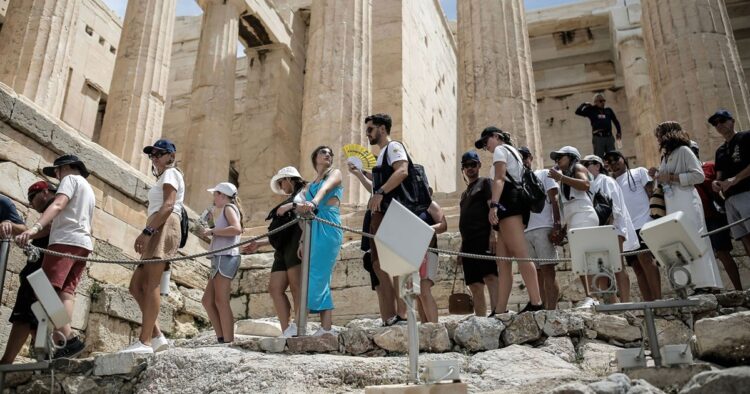Greece shut more ancient tourist sites in Athens on Thursday and elderly people took refuge at designated air-conditioned spots as the first heatwave of the summer persisted for a third day. The famous Acropolis, set on a rocky hill overlooking the capital, and other nearby tourist attractions were closed on Thursday afternoon as winds from North Africa pushed temperatures towards 43 degrees Celsius (109 degrees Fahrenheit).
Many primary schools and nurseries nationwide were closed to protect students from the heat, which was expected to recede on Saturday. Greece is one of the most hard-hit countries by global warming in Europe.
On Thursday afternoon, the famous Acropolis and other nearby tourist attractions were closed to protect visitors from the extreme heat. The temperature in Athens soared to 43 degrees Celsius (109 degrees Fahrenheit), driven by winds from North Africa.
Additionally, many primary schools and nurseries across Greece were also closed to safeguard children from the intense heat. The heatwave, which has lasted for three days, is expected to ease off by Saturday.
In Athens, tourists tried to stay cool by stopping at drinking fountains to wet their heads and necks. Local residents found relief in air-conditioned rooms set up by the city, using handheld fans to create a breeze.
Firefighters, who had put out several wildfires on Wednesday, remained on high alert due to the strong winds expected to hit several parts of the country. These conditions increase the risk of new fires breaking out.
ALSO READ: “Greece Urges EU to Protect Consumers from Unfair Multinational Practices”
Greece is one of the European countries most affected by global warming. Rising temperatures have led to deadly fires and unpredictable rain patterns in recent years. Athens, home to five million people and known for its hot climate, is particularly vulnerable.
Scientists predict that summer temperatures in Athens could rise by an average of 2 degrees Celsius by 2050. To combat this, Athens mayor Haris Doukas has initiated efforts to create more shade in the city by planting 2,000 trees. His goal is to lower the felt-air temperature, particularly in areas where temperatures are significantly higher due to the heat-absorbing properties of cement and city roads.

















Comments